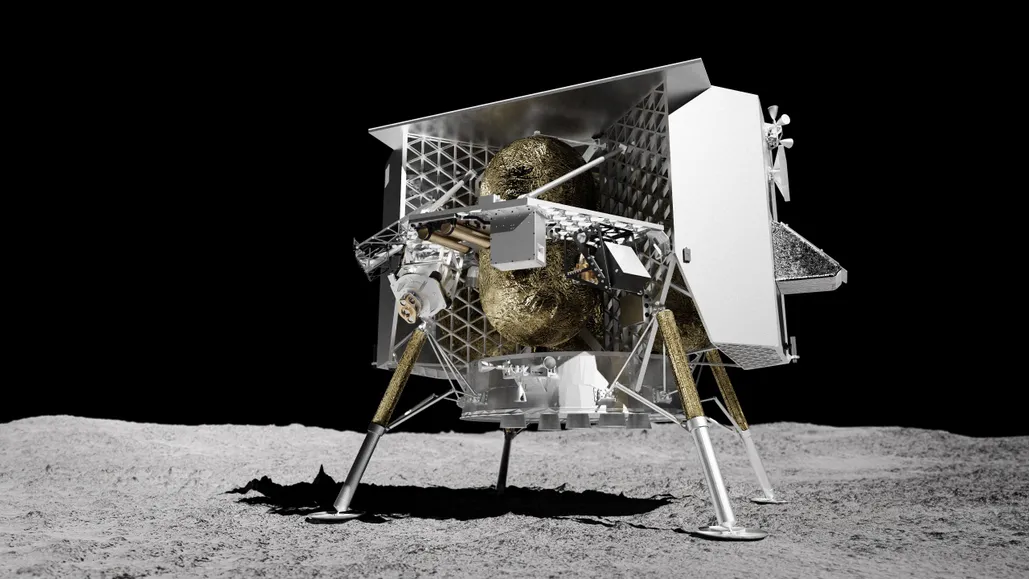Description

Disclaimer: Copyright infringement not intended.
Context
- The recent launch of a spacecraft by a private US company, carrying scientific instruments from NASA, marks a significant milestone in lunar exploration.
- This mission aims to achieve the first landing of a private spacecraft on the Moon as part of NASA's Commercial Lunar Payload Services (CLPS) initiative.
- The mission is designed to deploy the Peregrine lander module, developed by Astrobotic Technology, utilizing the Vulcan rocket from United Launch Alliance (ULA).
Details
- Mission Objectives: The spacecraft will carry five payloads from NASA within the Peregrine lander. These payloads are intended to conduct various exploratory tasks, including the detection of water on the Moon's surface.
- Landing Schedule: After a journey lasting over 40 days, the spacecraft is scheduled to land on the lunar surface on February 23, where the payloads will be deployed to conduct scientific activities. Some instruments, such as the Laser Retroreflector Array, will remain permanently on the Moon's surface to aid in precision measurements and act as markers for lunar distances.
- Challenges Encountered: Following the launch, the spacecraft faced technical issues preventing it from achieving a stable orientation towards the Sun, potentially affecting the efficiency of its solar power batteries. Astrobotic Technology is working to rectify this problem to ensure mission success.
Significance of the Mission
- Historical Milestone: If successful, this mission would mark the first landing of a private spacecraft on the Moon, rekindling US interest in lunar exploration after over five decades since the last manned landing by Apollo 17 in December 1972.
- Artemis Program and Lunar Exploration: NASA's Artemis program aims to return humans to the Moon's surface for longer stays, establish a sustainable lunar base, and conduct extensive scientific research. Collaborations with the private sector through CLPS facilitate technological advancements and create a market for lunar exploration.
- Commercial Space Economy: The CLPS initiative supports a burgeoning commercial space industry, showcasing American technology and innovation while promoting scientific discoveries and paving the way for future space exploration endeavors.
Future Implications
- Scientific Discoveries: The mission's success would contribute to a deeper understanding of the Moon's surface, environment, and resources, aiding in scientific studies related to planetary evolution.
- Market and Technology Ecosystem: Collaboration between NASA and private companies fosters the growth of a market and technology ecosystem in the private space industry, supporting future space missions and innovation.
- Preparation for Human Exploration: Insights gained from these missions will inform future manned missions, laying the groundwork for sustained human presence and exploration beyond Earth.

US lander of 1972
- The US lander of 1972 refers to the Apollo missions conducted by NASA, particularly Apollo 17, which was the final mission of the Apollo program and the last manned mission to the Moon to date.
- Apollo 17 was launched on December 7, 1972, and it included the lunar lander module, officially known as Lunar Module-11 (LM-11), named "Challenger."
Components of the Apollo 17 Mission:
- Crew:
- The crew members for Apollo 17 were Commander Eugene Cernan, Lunar Module Pilot Harrison Schmitt, and Command Module Pilot Ronald Evans.
- Objectives:
- The primary goals were scientific exploration and sample collection in the Taurus-Littrow lunar region.
- This mission aimed to extend the duration of stay on the lunar surface, enhance scientific experiments, and gather diverse geological samples.
- Launch and Journey:
- Apollo 17 was launched atop a Saturn V rocket from Kennedy Space Center in Florida.
- After a successful launch, the spacecraft traveled to the Moon over a period of several days.
- Lunar Landing:
- On December 11, 1972, the lunar module "Challenger" detached from the command module in lunar orbit and descended to the Moon's surface.
- Cernan and Schmitt landed the LM-11 in the Taurus-Littrow valley, marking the final human landing on the Moon.
- Activities and Experiments:
- The astronauts conducted three moonwalks (extravehicular activities) during their stay on the lunar surface.
- They collected rock and soil samples, set up scientific instruments like the Lunar Roving Vehicle (LRV), and performed experiments related to geology, seismology, and lunar surface conditions.
- Return and Splashdown:
- After spending approximately 75 hours on the Moon, the lunar module ascended and rejoined the command module orbiting the Moon.
- The crew departed the Moon on December 14, 1972, and returned to Earth, splashing down safely in the Pacific Ocean on December 19, 1972.
- Legacy and Scientific Contributions:
- Apollo 17's scientific experiments and collected samples significantly expanded our understanding of the Moon's geological history, surface composition, and environment.
- Data obtained during this mission continued to be analyzed and contributed to numerous scientific studies even decades after the mission's conclusion.
About CLPS
- The Commercial Lunar Payload Services (CLPS) initiative by NASA represents a strategic collaboration with American companies, facilitating the delivery of scientific payloads and technology to the lunar surface.
- Through this program, NASA aims to advance scientific research, test innovative technologies, and prepare for human missions on the Moon under the Artemis program.
CLPS Initiative Overview:
- Objective: The CLPS initiative seeks to acquire lunar delivery services from various American companies to transport payloads that contribute to lunar science, exploration, and commercial development.
- Participating Companies: Initially, nine U.S. companies joined the CLPS project in November 2018, with NASA later adding five more vendors, totaling 14 eligible vendors. These companies engage in bidding for surface task orders as per NASA's evolving requirements.
- Contract Details: CLPS contracts are indefinite delivery, indefinite quantity contracts with a cumulative maximum contract value of $2.6 billion through 2028.
- Payload Delivery Services: Companies selected under CLPS provide end-to-end commercial payload delivery services, encompassing payload integration, mission operations, launch from Earth, and landing on the Moon's surface. Commercial payloads are also encouraged.
Delivery Timeline and Payloads:
2023 Deliveries:
- Astrobotic: Delivering NASA payloads to Sinus Viscositatis and the Gruithuisen Domes area.
- Intuitive Machines: Delivering NASA payloads near the Malapert A crater and the PRIME-1 drill to the lunar South Pole.
2024 Deliveries:
- Astrobotic: Delivering NASA's VIPER rover to the lunar South Pole.
- Firefly Aerospace: Delivering payloads to Mare Crisium.
- Intuitive Machines: Delivering research, including science investigations and technology demonstrations, to Reiner Gamma.
2025 Deliveries:
- Draper: Delivering science investigations to Schrödinger Basin on the lunar far side.
2026 Deliveries:
- Firefly Aerospace: Delivering two agency payloads to the lunar far side and a communications/data relay satellite into lunar orbit in collaboration with ESA (European Space Agency).

Conclusion
In summary, this mission represents a critical step in NASA's collaborative efforts with private space enterprises, promising significant advancements in lunar exploration, scientific discoveries, and the growth of the commercial space sector, ultimately paving the way for humanity's return to the Moon and subsequent deep space missions.
|
PRACTICE QUESTION
Q. Discuss the significance of the recent lunar landing mission by a private US company under NASA's CLPS initiative. (250 Words)
|














